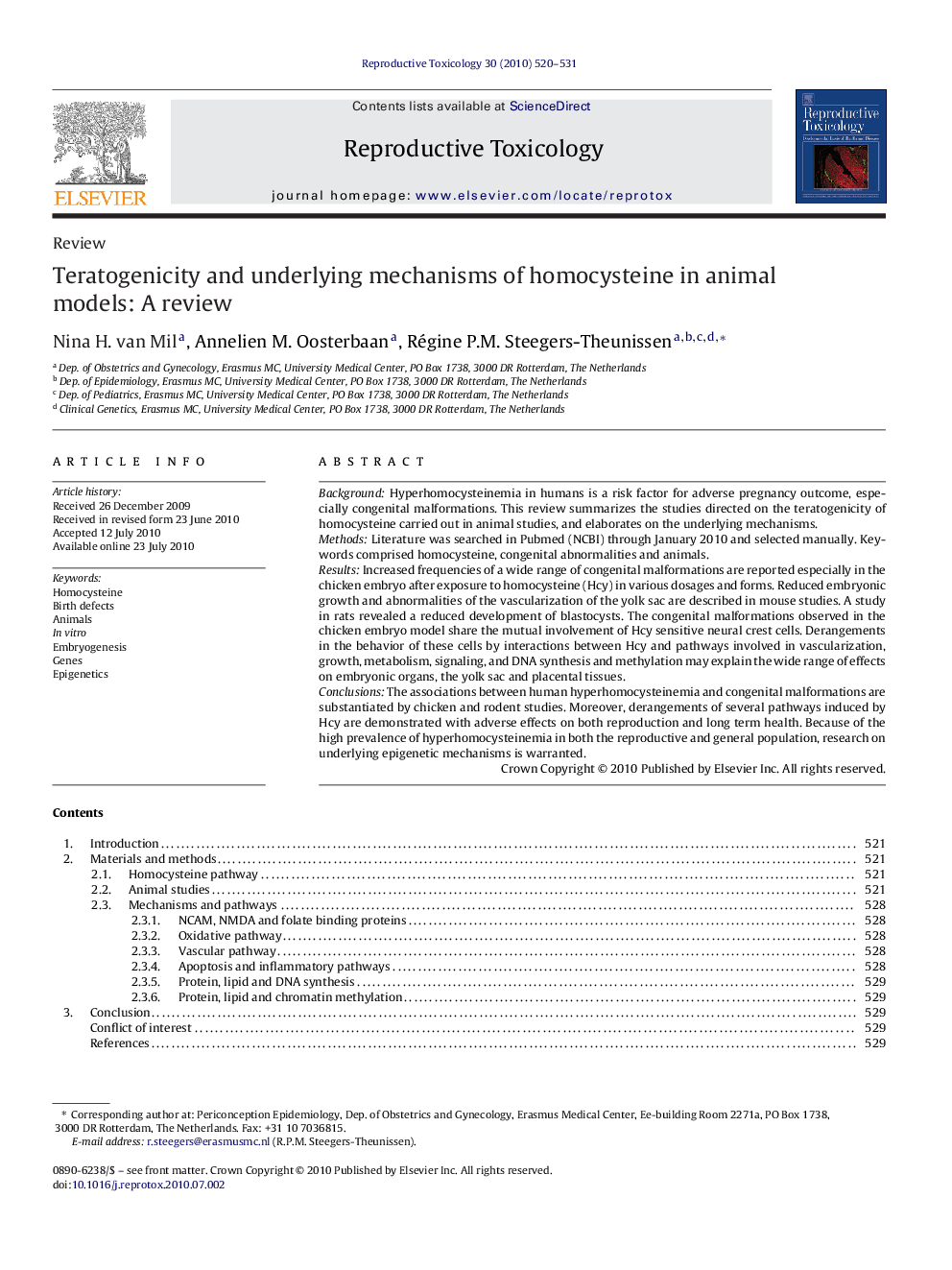| کد مقاله | کد نشریه | سال انتشار | مقاله انگلیسی | نسخه تمام متن |
|---|---|---|---|---|
| 2594148 | 1562185 | 2010 | 12 صفحه PDF | دانلود رایگان |

BackgroundHyperhomocysteinemia in humans is a risk factor for adverse pregnancy outcome, especially congenital malformations. This review summarizes the studies directed on the teratogenicity of homocysteine carried out in animal studies, and elaborates on the underlying mechanisms.MethodsLiterature was searched in Pubmed (NCBI) through January 2010 and selected manually. Keywords comprised homocysteine, congenital abnormalities and animals.ResultsIncreased frequencies of a wide range of congenital malformations are reported especially in the chicken embryo after exposure to homocysteine (Hcy) in various dosages and forms. Reduced embryonic growth and abnormalities of the vascularization of the yolk sac are described in mouse studies. A study in rats revealed a reduced development of blastocysts. The congenital malformations observed in the chicken embryo model share the mutual involvement of Hcy sensitive neural crest cells. Derangements in the behavior of these cells by interactions between Hcy and pathways involved in vascularization, growth, metabolism, signaling, and DNA synthesis and methylation may explain the wide range of effects on embryonic organs, the yolk sac and placental tissues.ConclusionsThe associations between human hyperhomocysteinemia and congenital malformations are substantiated by chicken and rodent studies. Moreover, derangements of several pathways induced by Hcy are demonstrated with adverse effects on both reproduction and long term health. Because of the high prevalence of hyperhomocysteinemia in both the reproductive and general population, research on underlying epigenetic mechanisms is warranted.
Journal: Reproductive Toxicology - Volume 30, Issue 4, December 2010, Pages 520–531